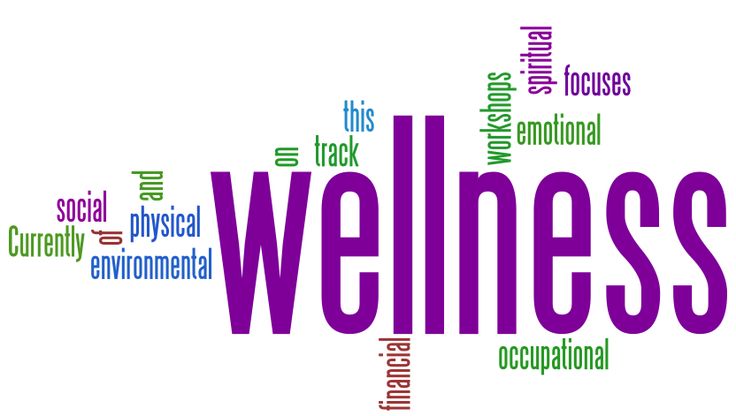Weekly Wellness - Why Are Health Care Costs Rising?
Open gallery

Health care costs, and consequently employee health benefit costs, have been growing at an alarming rate in recent years. Total health insurance costs for employers could reach nearly $850 billion by 2019. Why are costs rising so high, so fast?
Why Are Costs Rising?
Several market conditions working together have led to steep increases. Understanding these factors will help you be aware of the reasons behind any changes your employer decides to make to any benefit or employee contribution (the amount you are required to pay out of your paycheck).
Several factors have contributed to climbing health care costs over the past decade, including the following:
- Demographics
- Expansion of health care providers
- Consolidation of managed care companies
- Government regulation
- Increased utilization and consumer demand
- New medical technology
- Weakening of managed care system
- Health care spending and medical cost inflation
- Increased prescription drug costs
In addition, Aon Hewitt has identified specific factors that are contributing to the current health care costs and projected figures that continue to rise:
The Aging of America
According to the U.S. Census Bureau, the number of Americans age 65 and older is expected to nearly double by 2025, and the elderly population (80 and older) will increase by 80 percent. As this population ages, there is a subsequent rise in the occurrence of chronic diseases such as asthma, heart disease and cancer, and the need for more resources to fight these diseases. This leads to the increased use of prescription drugs and other medical services, and an overall increase in health care spending.
The Dramatic Rise of Prescription Drug Costs
Prescription drug costs continue to represent an increasingly large portion of health care expenditures. According to IMS Health, the United States spent nearly $374 billion on prescription drugs in 2014—eight times more than the $40.3 billion spent in 1990. Furthermore, in 2014, prescription drug spending in the United States increased 13.1 percent—the largest increase since 2003. This jump was due to a number of factors—a major one being a 30.9 percent increase in spending on specialty medications, according to Express Scripts Lab.
While prescription drug spending has been a fairly small proportion of national health care spending compared to spending for hospital and physician services, it has been one of the fastest-growing components, compared to hospital and physician services.
A number of factors contribute to changes in prescription drug costs, including the following:
- Increased use — From 2013 to 2014, the utilization of traditional prescription drugs decreased 0.1 percent. Usage of specialty drugs, though, increased 5.8 percent, contributing to greater spending.
- Changes in the types of drugs used — Prescription drug spending is affected when new drugs enter the market and when existing medications lose patent protection. New drugs can either increase or decrease overall drug spending, depending on price and how the new drug relates to existing drugs on the market—for example, if it replaces a drug, is a new treatment or adds competition. Drug spending is also typically reduced when brand name drugs lose patent protection and face competition from new, cheaper generic substitutes.
- Advertising — Prescription use in general and brand-name, higher-priced drugs in particular can be influenced by advertisements. Critics of direct-to-consumer advertising feel that promotion of drugs to consumers instead of doctors creates inappropriate consumer demand for certain medications.
- Profits — Centers for Medicare and Medicaid Services projects that from 2012 to 2022, annual expenditures on prescription drugs will grow by 75 percent to $455 billion. Outpatient prescription drugs will account for about 9 percent of total health care spending. By 2022, the ACA is expected to add an additional $15.3 billion in annual drug expenditures.
- Insurance coverage — Individuals with insurance are more likely to use prescription drugs than those without insurance. The ACA requires non-grandfathered health plans to include prescription drugs as one of the “essential health benefits,” and all forms of birth control must be covered without cost-sharing. Over the next few years, rebates and discounts will also be available to certain Medicare Part D beneficiaries. This influx of insured individuals has resulted in a rise in prescription drug spending.
The Consolidation of Insurance Companies
During the economic boom of the 1990s, competition among insurance carriers and managed care companies was fierce. In order to gain market share, many large insurance companies acquired smaller, weaker firms and kept their rates low in order to stay competitive. This practice has taken its toll, leading to dips in profitability and stock prices for a number of large insurance carriers. Now, those companies that have survived are faced with much less competition and are committed to returning to profitability, which has ultimately resulted in increased rates for employers and contributed to greater cost-sharing for employees.
The Weakening of the Managed Care System
Also in the 1990s, employers began offering plans that allowed patients to see out-of-network doctors or those that had less strict referral processes through benefits, such as point-of-service (POS) plans. In addition, many employers making health plan purchase decisions focused on keeping employees happy by ensuring that most doctors in an area were in a chosen network, rather than choosing narrower networks with deeper discounts. All of this has led to a general weakening of the managed care system. With the level of premium increases over the last few years, many employers have backed away from offering such rich benefits, and instead have restricted networks to reduce costs.
Increased Utilization and Consumer Demand
Utilization of many health care services has risen over the last decade. A number of factors such as improvements in medical technology, the influence of managed care, elevated consumer awareness and demand, and a boost in the number of practicing physicians caused health services—like the number of surgical procedures and the number of prescription drugs dispensed—to rise significantly. Other services such as breast cancer screenings, immunizations for children, and diagnostic procedures like CT and MRI have also experienced sharp utilization increases.
What Does It All Mean?
Your employer, like others, is undoubtedly trying to determine how to keep increasing health plan rates from having a serious financial impact on both employees and the company. Many firms absorbed the increasing costs for years to avoid further burdening their employees. Now, most are realizing that they will have to pass portions of the costs on to employees in the form of higher premiums, or benefit designs that require them to pay more out-of-pocket for the medical services they use through increased coinsurance, copayments or deductibles.
Sources: National Coalition on Health Care, U.S. Census Bureau, Centers for Medicare and Medicaid Services, IMS Health, Express Scripts and U.S. Department of Health and Human Services.
Human Resources is located in Lower McAfee on the Undergraduate Campus.
MSC: 72
email hr@lclark.edu
voice 503-768-6235
fax 503-768-6233
Associate Vice President & Chief Human Resources Officer Helen Howell
Human Resources
Lewis & Clark
615 S. Palatine Hill Road MSC 72
Portland OR 97219


